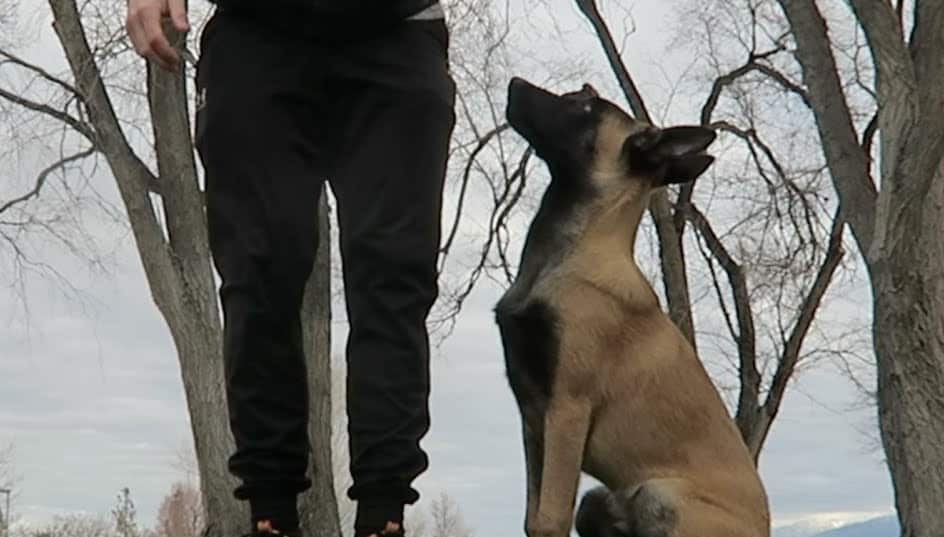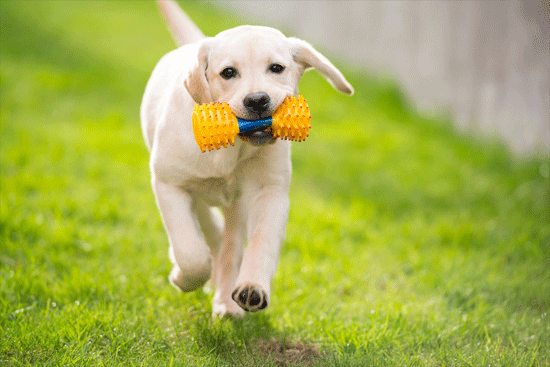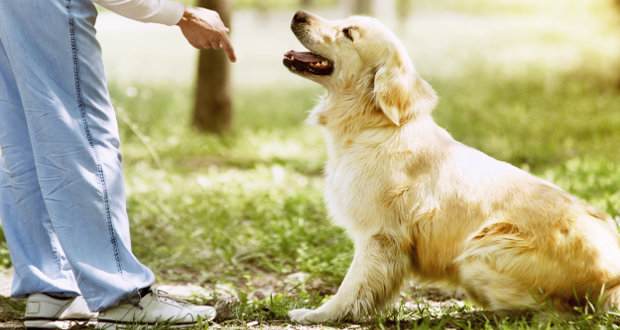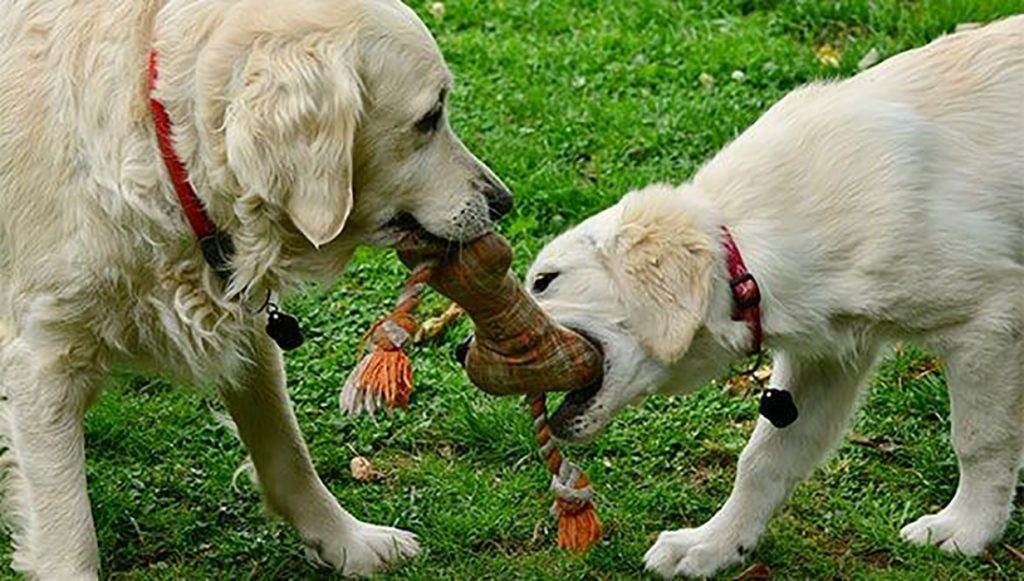Labrador retrievers (better known as Labradors or Lab) are believed to be one of the best, well-liked, and of course, adorable dog breeds in many countries all over the world. These dogs are widely admired for their obedience, loyalty, and playfulness. Rather than lying in bed all day and doing nothing, Labradors tend to spend most of their time frolicking outdoors.
As a result, people sometimes can’t help but notice how Labradors exhibit behavior problems on account of hyperactivity. However, there is no reason to worry because Labradors are hyper only when they are puppies and later in life, tend to grow quite calm and docile.
Labrador maturation stages
- Labradors at their juvenile stage (3 to 6 months): During this phase of life, Labrador puppies tend to behave impulsively and try to test the boundaries set up by their owners for they are in the prime of their youth. During this period, energy kicks in and they start embracing life. With the rise in their levels of curiosity, the pup starts following its owner everywhere he goes. It also tends to jump around a lot and chase random objects around the house. If the puppy isn’t kept busy with physical activities that can stimulate them, these puppies may resort to activities of their own like biting or misbehaving.
- Labradors at their adolescence stage (6 to 18 months): At this phase, a Lab puppy evolves into a fully-grown handsome dog. However, appearances can be deceptive as the Labrador continues to behave like a puppy both mentally and emotionally. At this stage, new things can either excite or scare the Labrador. The Labrador also tends to be slightly moody as they’d react either irritably or energetically when they come face-to-face with certain moments in life. The reason for this behavior is because the Labrador is now a teenager. As teenagers, they tend to forget everything they have been taught. Therefore, dog owners must remind, train and challenge their lab both mentally and physically for them to be more obedient and calm. However, in comparison to its juvenile stage, a Labrador at its adolescence is more calm and docile.
- Labradors at their young adulthood (18 to 36 months): In comparison to its adolescence stage, the Labrador is considered to be all the more calm and mature when it’s a young adult. However, without proper training, Labradors can turn out to be very violent and uncontrollable. Therefore, one must train their Labradors well to prevent any mishap from taking place.
How to calm my Labrador?
There are numerous methods one can employ to calm their Labrador down. Some of these methods are listed below as follows:
- Be in charge: Though you may have a good thing going with your dog, there comes a time when you have to stop and take control. You have to condition your Labrador in such a way that it becomes the best version of itself. Particularly, you have to take on the role of the dog’s parent so you can condemn it on its bad behavior and guide it through a behavior you think is best for your pet.
- Tire them out: The best and most efficient way to calm your dog down would be to tire them out with lots and lots of exercise. One can do so by either taking them out for a walk in the morning, by letting them play and interact with other dogs in the park, by making them your running partners or by playing fetch.
- Change your behavior: If a person wants to keep their lab calm, it is better for them to not use high pitched sounds or a dramatic voice to greet their dogs as this, in turn, would excite the Labrador and give rise to a hyperactive and energetic behavior.
- Keep them occupied with activities: A person can get their Labrador toys to improve their mental strength.
- Training harness: There tend to be times where Labradors get very energetic and overexcited when they are having fun and this in turn could lead to dangerous events, especially in public places like the park. Therefore, to gain control over your dog in public places, it becomes necessary to put a training harness on your Labrador so you can easily clip on a leash whenever you take the Lab out for a brisk walk. In return, this action will calm your dog and prevent it from behaving in a silly manner.
- Prevent rough play: One must avoid rough play with Labradors as this would stimulate the dog and it might lead to things going slightly out of hand. In such situations, the Labrador ends up biting or growling at their owners. Therefore, when things go out of hand you must step in and calm your dog immediately.
- Teach your dog to relax: Grooming your Labrador is the perfect method to employ to calm your dog. A dog generally tends to slow things down after a soothing brush of their thick coat.
How will changing your behavior calm your Labrador?
Labradors tend to be well-aware of their owner’s emotions and can partially feel those emotions themselves, mainly in the prime of their youth. On that account, when you greet your Labs in a loud and excited manner, they tend to react the same way. Similarly, if you are calm, they tend to remain calm too.
Therefore, it is best to stay calm and composed in situations when you want your Labrador to remain calm. However, it does not necessarily mean that one should always stay glum. This is because an individual must always remember that we are the ones teaching them what is good and what is bad.
Given below are a few tips you can follow to restrain your Labrador’s excitement before it turns into something chaotic:
- It is usually considered best not to wrestle or participate in any form of physical play when you want your dog to remain calm as this would result in the dog being overexcited or boisterous.
- It is best not to reward your Labradors when they misbehave as this will teach them the difference between good and bad.
- You can reward your Labradors when they are calm and patient. Though dog owners may find this policy hard to believe, rewarding your Labradors is considered to be a very powerful tool as this will teach them to be more calm and quiet.
How to calm a Labrador under different situations?
How to calm an anxious retriever?
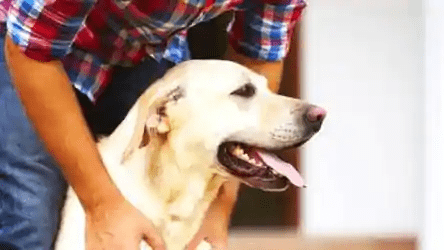
Labradors do not spend their entire life being hyperactive and energetic. This chaotic behavior is mainly a result of their anxiety. Even though Labradors aren’t prone to nervous or anxious behavior, these two terms are inevitable in any creature or person living in this world. Therefore, the owner needs to know whether his or her Labrador is anxious or not. One can do so by learning to read the signals a Labrador would possibly exhibit when they are anxious.
Some signals may include incessant barking, restlessness, diarrhea, drooling, panting, and compulsive behavior. The best method to resort to when you want to calm an anxious Labrador down is to let your Labrador know that he is loved, protected, and safe. When your Labrador’s anxiety is triggered, you must be there for him and should try your best to build tolerance and confidence in your Labrador. You must remember to always be patient with your dog and you mustn’t force them to do something they don’t want to do.
How to calm a scared dog?
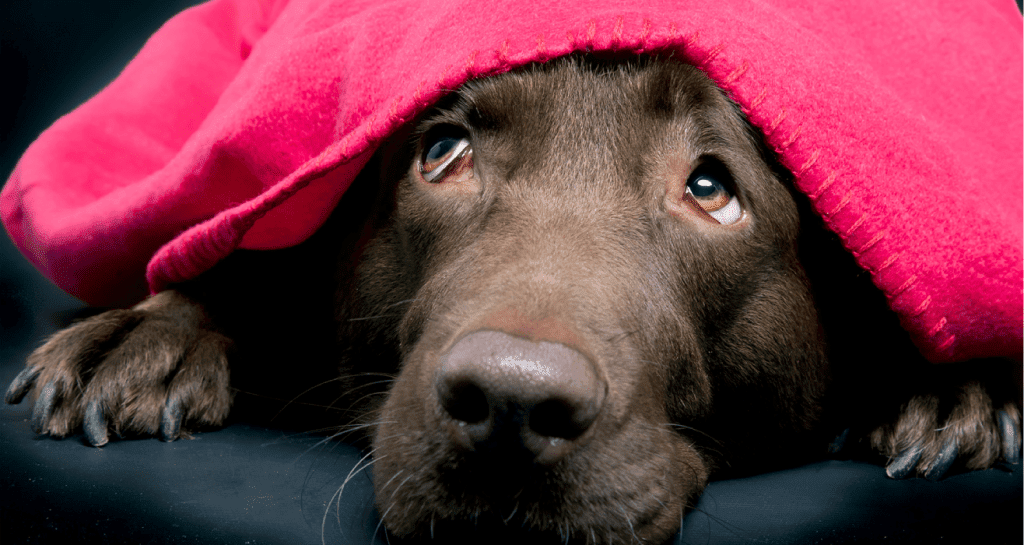
Labradors are so full of life that you can’t help but think that they live a life free of fear. This, however, is not the case. Labradors do encounter certain moments in life where they tend to react warily. And it’s not just Labradors, even the most cheerful dogs sometimes face moments of acute fear in their lives. The most common fear of a Labrador is thunder, firework, heavy rain, truck driving down the road, separation anxiety, going up and down the stairs, meeting strangers or children, dog to dog aggression, or a visit to the veterinarian.
Dogs generally tend to exhibit a certain body language when they are scared or frightened. This makes it easier for owners to know when their Labrador is scared. These signs may include: dilated pupils, flattened ears, tucked tails, shivering, trembling, yawning, nose licking, barking, and growling. When dogs are afraid of a particular object, that object must be moved out of the dog’s sight.
To help the dog overcome his fear of the object, you can slowly introduce the objects to your dog in a friendly, happy, and positive manner. If you want to calm a scared Lab down then you can employ methods like spending more time at home with your dog, providing distractions, and creating a calm and safe environment for your Labrador.
How to calm my dog during fireworks?
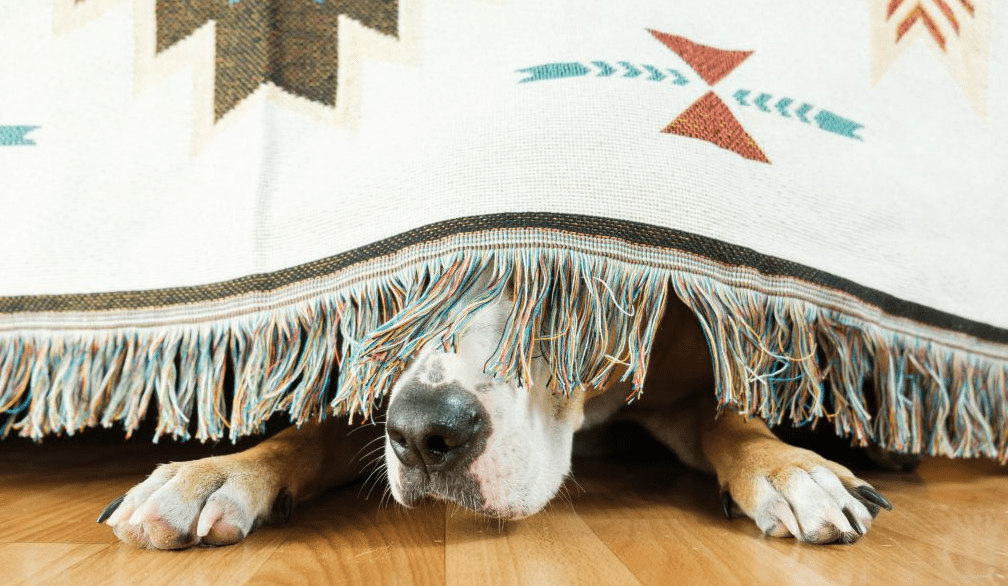
Fireworks are allegedly a dog’s greatest fear. Dogs are known to experience high levels of anxiety, restlessness, and stress when they encounter fireworks. This is because fireworks occur only once or twice a year on special occasions. Moreover, modern-day fireworks are considered to be extremely loud and noisy. Since Labradors are not accustomed to these inconsistent sounds, they are mostly found whining, panting, or pacing around the house.
Thus, to avoid risking the health of your dog, the best method one can employ to calm your Labrador down is to keep your pet at home. Soundproofing (closing windows will work just fine too) all the windows can make a significant contribution towards reducing outdoor noise. Closing the curtains can likewise prevent a fireworks display from bothering your Labrador.
Since dogs have a fight-or-flight reaction towards noise, one must make sure to restrain Labradors as they tend to run away. This can be done by building a safe kennel for the dog and by comforting the dog when it’s scared or frightened.
How to calm my dog in a car?

Quite a few Labradors are in love with the idea of sticking their head out the window while they travel in the backseat of the car or the freedom of sleeping in the trunk of the car. However, there are also a few Labradors who feel uneasy while they travel in a car. To help these Labradors get over their uncomfortability, one must focus on reducing the stress of the Labrador.
This can be achieved by creating a jovial and pleasant environment. Handing them their favorite toy or blanket and feeding them their favorite meal is said to be an effective tool in enhancing the dog’s mood. Moreover, a few Labs also suffer from motion sickness. In that case, to help a dog relax, one must make sure to reduce the effects of the car’s motion and keep the interior of his car cool.
There are also tablets like damimine which can prove effective for Labradors during motion sickness. In short, one must remember that motion sickness in dogs could be avoided by effective methods so that your Labrador can have plenty of opportunities to experience happy car journeys.
How to calm my dog with medication?
It is considered inappropriate for people to give their Labradors medication to calm them down. Instead, an owner can opt for basic calming methods like taking their dog out for a walk or giving them physical activities to do as it would prove effective in controlling hyperactive dog behavior. However, when behavioral changes are sudden, it may give rise to an alarming situation as the dog can get aggressive when he is in a hyperactive mood.
Therefore, at times like this, it is always a good idea to visit your vet. When Labradors are charged with hyperactivity and uncontrollability, the veterinarian is likely to give the Lab medication which would lower their activity levels. When Labradors feel stressed or anxious, the veterinarian will suggest dexmedetomidine to help ease their mood. A person can also calm their anxious dog down using specially infused calming collars like Adaptil which is an efficient tool when it comes to relieving stress during car journeys, fireworks, and thunderstorms.
Calming music is likewise considered a well-liked approach to calm Labradors down too. Therefore, it may be concluded that consulting a veterinarian is a much better option than giving Labradors different kinds of drugs or medicines.
Games to calm your dog
There are many fun and exciting indoor activities owners can employ when they play with their Labradors to keep their dogs occupied as well as calm. Some of them include:
- Find it: Dogs generally love to use their noses. Therefore, in this game, you will require a handful of treats to toss them around the room. Your Labrador would then have to wait patiently till you have tossed all the treats around the room. This can be done by putting a leash on your dog. Once you’ve finished tossing all the treats, you can ask your Labrador to find those treats. The trick is to hide the treats in harder places every time your Lab finds it (such as in containers or under the staircase) so Labradors can go look for these treats the next time they play the game. Through this activity, not only will your Labrador love finding his treats but will also have a good time eating them.
- Hide and seek: This is a fun version of the find it game. Have your Labrador sit in a room patiently or make someone hold him with a leash while you go and hide yourself in another room. Once you have hidden yourself, call your Labradors name and say find me. You can hide anywhere around the house like in the closet, bathtub, or even under the bed. When your dog finds you in your hiding spot, you can reward him with treats.
- Manners minder: If you are into high-tech training exercises, one can use a treat dispenser called manners minder that functions by spitting a treat to your Labrador when you push a button on a remote control. It is a tool that allows you to reward your Labrador when he is performing the correct behavior. When you use manners minder, it conditions the dog to think that the beep he hears from the machine would mean a treat popping out. You can set the machine a few steps away from your Labrador and push the button on your remote control. Once the treat dispenser spits out the treat, release your dog so that he can search for his treat.
How to calm a dog with positive reinforcement training
A positive training plan for successful animal management is the key element to help avoid chaotic behavior manifested by your Labrador. Given below are some methods you can opt for to calm down your Labrador:
- Dog crates and pens: Utilization of dog crates and exercise pens can help Labradors bring their energy into play. This exercise would assist Labradors in avoiding retaliation against their owners and would help suppress inappropriate behaviors. To make this work, Labradors must first like his crate or pen and should accept that it is a good place to be.
- Leashes: With the aid of a leash, an owner can keep his Labrador close to him so he can provide constant supervision to prevent their Labrador from escaping. Also, with the Labrador by your side, you can now strengthen his behavior with ease.
- Baby gates and doors: Baby gates and doors at home can help prevent Labradors to access vulnerable areas. It also prevents access to areas where you cannot supervise your Labrador. This proves to be an effective tool in averting chaotic behavior and ensures the safety of your Labrador on the other side as well.
Conclusion
There is no doubt that Labrador retrievers make excellent family dogs. They are loyal, intelligent, and a cuddly ball of fun to have around. Be that as it may, only a few dog owners know that Labradors can be quite a handful at times. Seeing how they are active, sociable, and high-spirited animals, owners can’t help but notice hyperactive behavior in their Labs like running around the house, jumping over furniture, fiddling with house objects, bumping into people, or wagging their tails fast when they see something they like.
In such situations, it is considered best to calm Labs down a bit because hyperactivity is generally associated with negative behavior. Thus, to assist Lab owners better, this article answers questions regarding the age Labradors turn calm, discusses various reasons as to why your Lab isn’t clam in the first place and also offers different solutions to help calm down a Labrador retriever.
References
- https://books.google.com/books?hl=en&lr=&id=0MUTAAAAYAAJ&oi=fnd&pg=PR1&dq=Labrador+dog+Calm+Down&ots=QSUnFMaNfD&sig=LqlbKGSorEpn6P-WepKkZMkKo58
- https://www.jstor.org/stable/10.7588/worllitetoda.91.3-4.0016
Table of Contents

